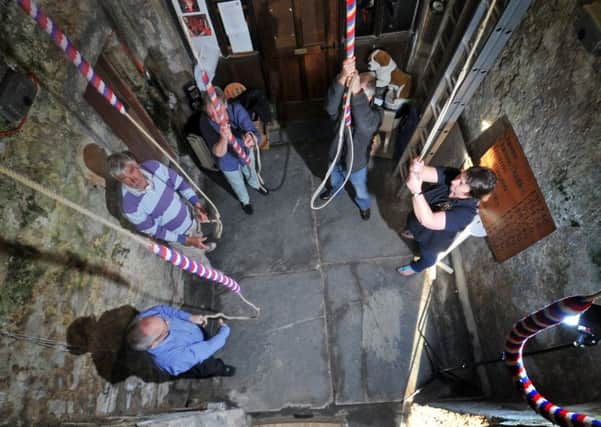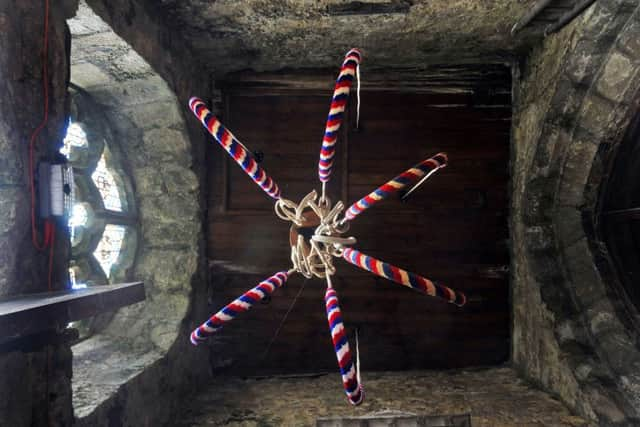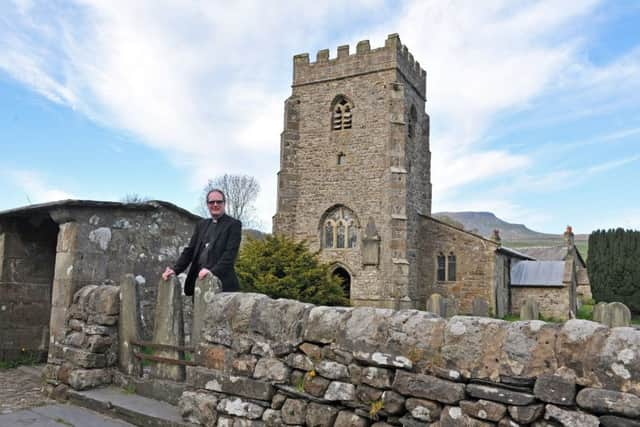Why bell ringing is having an unlikely renaissance in Yorkshire


From Liverpool Cathedral with the heaviest ring of bells in the world, to St Oswald’s in Horton-in-Ribblesdale, rated by experts as the most complete Norman church in the Yorkshire Dales, England’s bell towers have long been broadcasting melodies as English as Yorkshire pudding.
Take diminutive Horton church as an example. Bob Doubles… Grandsire triples… Plain Bob Triples are just three centuries-old “methods” that are rung here; all needing concentration and dedication from the ringers concerned.
Advertisement
Hide AdAdvertisement
Hide AdAs the ringers haul on the “sallies” (the candy-striped fluffy parts), the respective bell-ropes wrap then unwrap themselves from round the wheels to which the bells are attached. Each bell “dings” or “dongs” accordingly – ranging from the tenor (the weight of a small family car) down to the smallest size, the treble.


Horton’s system is called “full circle” ringing: first raising a bell up to the top of its arc on one side, then letting it swing down before climbing up the other side. Its clapper meanwhile strikes its bell’s interior from one side to the other.
Despite there being an estimated 40,000 campanologists in the country, however, the centuries-old tradition of church bell ringing is under threat nationwide. The reason? A shortage of new recruits. Yet bell ringers at this doughty church standing four-square on the Pennine Way are finding more power to their respective elbows. There is even a waiting list.
All becomes clear when I visit Horton during a Monday practice night. A stiff breeze carries the sound of the bells to the quarter of a mile distant Pen-y-ghent cafe.
Advertisement
Hide AdAdvertisement
Hide AdSt Oswald’s tower captain, Gillian Parrington, meets me in the belfry and makes the introductions. Her claim that bell ringing is an invigorating mental exercise can be seen at a glance. Cheeks glow, handshakes grip; there’s a buzz in the ringing chamber as Thermos mugs of ice tea are poured.


On a bright May evening, the door is left open, swallows flit outside. A bumblebee settles on a stick-of-rock striped sallie decorating a rope hanging from the ceiling, then buzzes off.
“Why are church bells hereabouts are enjoying a renaissance?” repeats Gillian. “Well, newly retired people coming to live in the Dales look for a traditional activity where everyone can join in. Bell ringing fits the bill. Everyone is learning something new. It’s among congenial, supportive company. All are welcome. Oh, and ‘Have car, will travel’ helps.
“Some members ring at other church towers through the week. We even run ‘grab a tower’ trips to other areas like Wensleydale and Wharfedale, having made arrangements to ring the bells first.
Advertisement
Hide AdAdvertisement
Hide Ad“But, really, ringers here and at neighbouring churches “ring for each other” from a pool of up to 15 ringers or so. We never see another tower stuck – say when ringers are needed for a wedding or Christening.


“The 12th century St Oswald’s originally had three bells with a further one added in 1996. Two more arrived in 2014, with all six bells now mounted in a new steel frame, raised through the bell loft trapdoor above by block and tackle.”
St Oswald’s vicar, the Rev Stephen Dawson, or Steve as he prefers to be called says: “Gillian is an exceptionally gifted teacher. What she says, goes.”
The result is Horton’s bell ringers are often praised by visitors from places like Canterbury and Salisbury, people used to hearing church bells at their finest.”
Advertisement
Hide AdAdvertisement
Hide Ad“Gillian helped me no end,” agrees a voice. “I first got reprimanded for not following instructions. But how I’ve improved since.”


“And me,” says a colleague. “I messed up during a Bob Minor peal. Gillian was kind though a couple of colleagues gave me ‘the glare’ which we all can receive whenever someone quite literally drops a clanger.”
A ringer of 16 years, Vera Walker – a retired care manager from Giggleswick known as “Vee” – chips in.
“Gillian has taught in many places and attracts others to come and ring here from as far away as Lancashire. She began ringing at the age of 12 and was tower captain at Giggleswick church when she was a teenager.
Advertisement
Hide AdAdvertisement
Hide Ad“Today she’s ringing master at Settle church, still rings at Giggleswick and in addition rings at Long Preston, Gisburn, Barnoldswick and Kirkby Malham church (the bells were mentioned in Charles Kingsley’s Water Babies; the ton-weight tenor bell was first raised in the reign of the first Queen Elizabeth 400 years ago).”
Gillian sums up being a tower captain as “a very technical job, you have to be a people-person, and organise and encourage where needed.
“This means being able to bring on beginners, encourage young people and yet issue a reprimand too when a critical mistake could endanger those below.
“The bells, remember are heavy as they swing to and fro. Even the ropes feel alive. It helps that Steve, the vicar, plays an active part. He took lessons in ringing when he first arrived. Though he has less time to ring with all his various duties in Ribblesdale (he is also vicar of Stainforth and Langcliffe churches too), his enthusiasm is catching.
“Parishioners claim the bells have never sounded so sweet.”
Advertisement
Hide AdAdvertisement
Hide AdGillian’s teaching in the Southern and Western Yorkshire Dales over the past 10 or so years has paid off and a couple of her proteges pay tribute as they stand in their circle of colleagues, poised waiting to ring.
Trevor Shuttleworth, 73 had arrived from Long Preston, heralded by the burbling exhaust note of his classic Morgan sports car with a strap across the bonnet.
He says Long Preston church once used the Ellacombe system of ringing, but he wanted to try St Oswalds’s “full-circle” ringing.
He finds it addictive, and says Gillian is the perfect instructor.
Advertisement
Hide AdAdvertisement
Hide Ad“The Ellacombe system?” I prompt. “It was founded by a vicar, I think,” he says. “A kind of carillon where hammers hit the bells. One person controls everything.”
A voice interrupts, “It did away with unruly ringers.” “Eh? Really! Are Horton’s team unruly?” There’s a burst of laughter as somebody says: “All the time!”
Retired fire officer Andy Blackburn is chairman of Stainforth parish council and clerk of Horton-in-Ribblesdale parish council and is no doubt about how bell ringing has improved his life.
“I’ve been ringing for nearly two years now. I came to a taster day at Horton. Being an ex-fireman I like the teamwork involved. All thanks to Gillian who knows when to praise and when to do otherwise.
Advertisement
Hide AdAdvertisement
Hide Ad“Drop a clanger and, yes, people can ‘look’. You don’t do it again.”
It was said that when Thomas a Becket was murdered in 1170 the bells of Canterbury Cathedral tolled by themselves. The ancient west wall tower window shows the head of the saint.
Just then the sound of what I now know are the universally popular Plain Bob Triples fills the belfry. Yet nobody has moved.
It’s the ringtone on someone’s mobile.